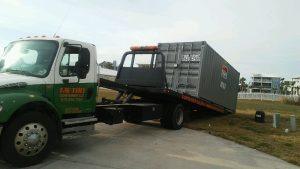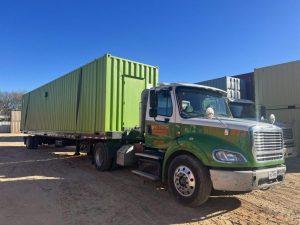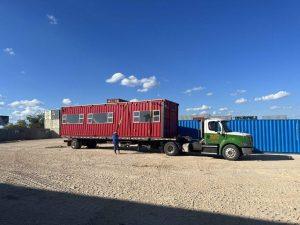Understanding the Delivery Process
Step 1: Site Preparation
Containers need to be placed on a fairly level, flat surface. Containers are self-supporting and are designed for the weight of the container to be transferred to the corner posts. It is recommended that the container be placed on cement pads (commonly called trailer bases) which are solid cements pads typically 16” x 16” x 4” thick, but railroad ties or other wooden blocks can also be used. It is very important that all four corners are firmly in contact with the blocks. If a container is sitting on a soft, unstable surface, the container can actually twist, causing the doors to become hard to open and close.
Step 2: Delivery Process
When the driver reaches your destination, he will meet with you to discuss and inspect the location where you are wanting the container to sit. We will be looking for overhead obstructions, make sure the driving surface is adequate to hold the weight of the truck, and be looking for any safety concerns. All of this done prior to unloading the container.
 |
 |
 |
We Deliver 20’s Nota A Roll-Back Wrecker When There Is Limited Space Available But 40’s Require Our Truck & Trailer
Delivery of the container is done with a tilt bed truck or trailer. We set the back end of the container down and slide the bed out from under the container. It is a very precise unload, it doesn’t just slide off the back.
When unloading a 20 foot container, we need a minimum of 75 Feet of straight clearance and a 40 foot container we need a minimum of 120 Feet. The driver is able to turn, jackknife, etc. to get into position for unload but the truck and trailer have to be straight during the actual unloading (if not the container can flip off the side). Keep in mind that we need 21 Feet of unobstructed vertical height to safely unload the containers, so keep power lines, signs, and awnings in mind.